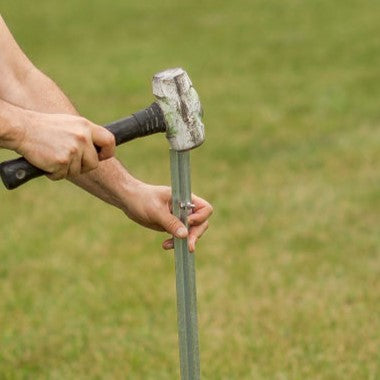Empowering Farmers: A Guide to Training Livestock on Electric Netting
In the world of modern agriculture, electric netting has become an invaluable tool for farmers seeking efficient and effective ways to manage their livestock. This guide aims to provide comprehensive insights into the process of training livestock on electric netting, ensuring a safe and secure environment for both animals and farmers.
Starkline Electric Netting is a prefabricated electric fence system that provides reliable protection and containment for pets & livestock, as well as areas under threat by invasive animals. When ground-based animals contact the netting they feel a short, high-voltage pulse of electricity. Animals quickly learn to avoid contact, and thus the netting acts as a mental barrier as well as a physical barrier. We offer solutions to contain chickens, sheep, goats, horses, household pets, or livestock; as well as exclusion options to protect crops, gardens, beehives, and other plots from nuisance animals.
Explore the advantages of using Starkline electric netting, such as ease of installation, portability, and its effectiveness in containing various types of livestock. Each Starkline netting product is designed for use with different animals. Netting height, number and spacing of horizontal and vertical conductive strands ensure safe and effective containment and protection for each animal type.
Poultry such as chickens, geese, and ducks require a taller net with closer spacing between the lower horizontal strands to keep these birds in while protecting them from predators. Horse netting needs fewer horizontal strands and larger spacing so that the electric charge provided by a similarly powered energizer is sufficient to keep horses safely contained.
Starkline provides a variety of different types of electric netting. Available on our website we have Poultry netting, Sheep and Goat, Garden, and livestock options.
When training livestock to respect electric netting is important for both their safety and effective pasture management. Here are some general steps you can follow to train livestock on electric netting:
- Set Up Properly:
Ensure that your electric netting is set up correctly and is in good condition. Check for any damages or vegetation touching the fence that could reduce its effectiveness.
- Introduce Gradually:
Introduce the livestock to the electric netting gradually. If possible, start with a small area enclosed by the netting.
- Use Temporary Fencing:
Initially, consider using temporary fencing to create smaller enclosures within a larger pasture. This allows animals to get used to the concept of electric fencing in a controlled environment.
- Provide Visual Cues:
Use visual cues such as flags or ribbons on the electric netting to make it more visible to the animals. This helps them associate the fence with a physical barrier.
- Use Temporary Confinement:
Temporarily confine the livestock within the electric netting enclosure for short periods. This allows them to experience the mild shock without associating it with negative experiences.
- Monitor Behavior:
Observe the animals closely during the initial exposure. Look for signs of curiosity or caution, such as touching the fence with their noses. Animals are quick learners, and they will associate the mild shock with the fence.
- Ensure Adequate Voltage:
Make sure that the electric fence is delivering an adequate and consistent shock. Low voltage may not effectively deter animals, leading to a lack of respect for the fence.
- Provide Positive Reinforcement:
Animals learn best when they associate positive experiences with desired behaviors. Consider providing treats or feeding them within the electric netting enclosure to create positive associations.
- Be Patient:
Training may take some time, especially with more cautious animals. Be patient and consistent in your approach. Avoid rushing the training process.
- Regularly Rotate Pastures:
If you're using electric netting for rotational grazing, regularly rotate the animals to new pastures. This not only helps with pasture management but also reinforces the understanding that the electric netting is a boundary.
- Regular Maintenance:
Periodically check and maintain your electric netting. Ensure that it is properly tensioned and that no vegetation or debris is touching the fence, as these can reduce its effectiveness.
In conclusion, training livestock on electric netting is a skill that can greatly enhance the efficiency and safety of livestock management. By understanding the fundamentals, selecting the right equipment, and implementing proper training techniques, farmers can create a secure environment that benefits both the animals and the farm operation. Safety should always be a priority, so farmers should familiarize themselves with local regulations and guidelines when using electric netting. With the right knowledge and approach, electric netting becomes a powerful ally in sustainable and effective livestock management.




